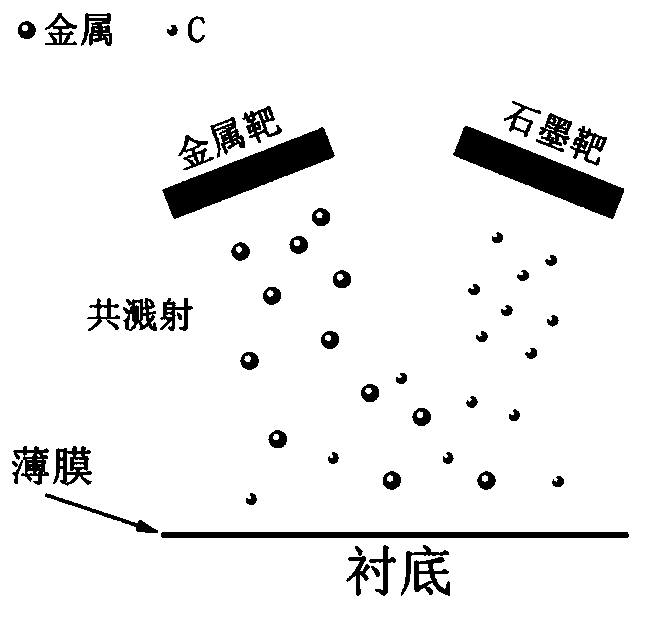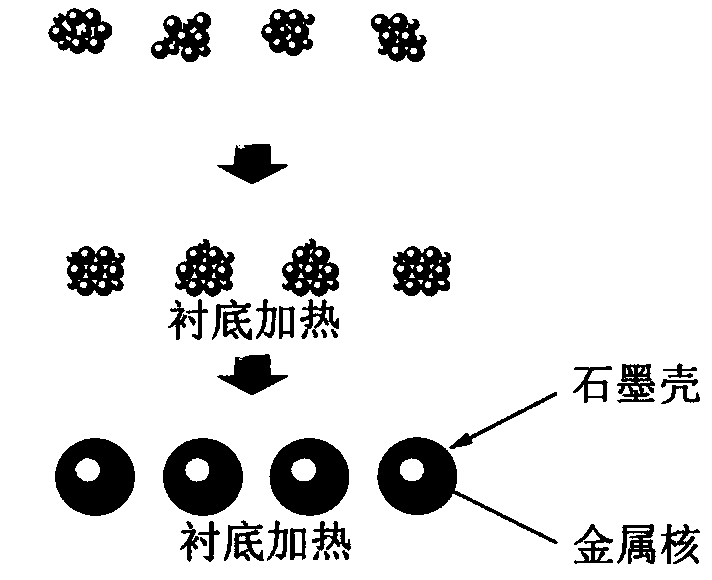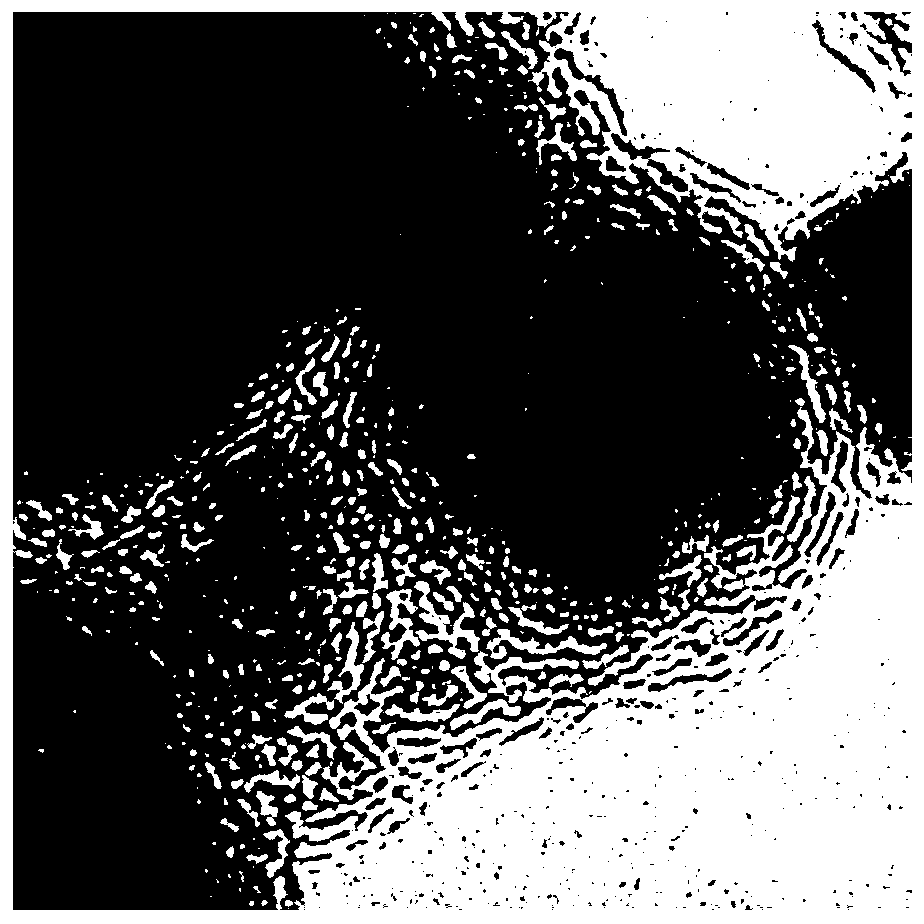A kind of thin film electrocatalyst with transition metal core-shell structure and preparation method thereof
A transition metal, core-shell structure technology, applied in structural parts, electrochemical generators, circuits, etc., can solve the problems of multiple by-products, high preparation temperature, unsuitable for large-scale industrial production, etc., to achieve increased surface area, high catalysis Performance, low cost effect
- Summary
- Abstract
- Description
- Claims
- Application Information
AI Technical Summary
Problems solved by technology
Method used
Image
Examples
Embodiment example 1
[0034] 1) Clean and dry the substrate; specifically, soak the substrate in HF acid solution (concentration 1%) for 5-15 minutes to remove surface oxides; then place the substrate in acetone solution for ultrasonic cleaning for 10-30 minutes , remove the oil on the surface of the substrate; then put the substrate in alcohol and ultrasonically clean it for 10-30 minutes to remove the organic matter on the surface of the substrate; finally, ultrasonically clean the substrate in deionized water for 10-30 minutes, take it out and put it in a drying box Dry at 30-50°C for 1-2 hours.
[0035] 2) Using magnetron sputtering equipment, put the cleaned and dried substrate into the vacuum chamber of the magnetron sputtering device, adjust the deposition angle to 45°, and the distance between the target and the substrate to be 100mm. The body is evacuated to 5×10 -4 Below Pa.
[0036] 3) Preset the substrate temperature to 250°C; after the substrate temperature rises to the preset temper...
Embodiment example 2
[0040] The substrate temperature in step 3) of Embodiment 1 is preset to 450° C., and the rest of the steps are the same as Embodiment 1. Under this condition, no core-shell structure was formed, and the Figure 6 It can be seen that the half-wave potential and initial potential obtained by the test are respectively -0.5V and -0.18V, and the electron transfer number is 3.59.
[0041] The above examples 1-2 are negative examples, because the pre-set temperature of the substrate is unreasonable, finally no sample with core-shell structure was obtained. The oxygen reduction catalytic performance of the product is poor
Embodiment example 3
[0043] The substrate temperature in step 3) of Embodiment 1 is preset as 650° C., and the rest of the steps are the same as Embodiment 1. Transmission electron microscopy of the resulting product was as image 3 shown by image 3It can be seen that the Cu@N-C core-shell structure film catalyst was prepared under the conditions of this example, the size of the metal core was 5-15 nm, the number of graphite shell layers was 3-5 layers, and the atomic percentage contents of Cu, C, and N elements were respectively: 22.81at%, 71.21at%, 5.98at%, and the film thickness of the thin film catalyst is 600nm.
[0044] The linear sweep voltammogram of the sample prepared in this embodiment to the oxygen reduction reaction is as follows Figure 6 shown by Figure 6 It can be seen that the half-wave potential and initial potential obtained by the test are -0.24V and -0.06V, respectively, which are close to -0.17V and -0.06V of the commercial Pt / C catalyst. The electron transfer number is...
PUM
| Property | Measurement | Unit |
|---|---|---|
| particle diameter | aaaaa | aaaaa |
| thickness | aaaaa | aaaaa |
| size | aaaaa | aaaaa |
Abstract
Description
Claims
Application Information
 Login to View More
Login to View More - R&D
- Intellectual Property
- Life Sciences
- Materials
- Tech Scout
- Unparalleled Data Quality
- Higher Quality Content
- 60% Fewer Hallucinations
Browse by: Latest US Patents, China's latest patents, Technical Efficacy Thesaurus, Application Domain, Technology Topic, Popular Technical Reports.
© 2025 PatSnap. All rights reserved.Legal|Privacy policy|Modern Slavery Act Transparency Statement|Sitemap|About US| Contact US: help@patsnap.com



